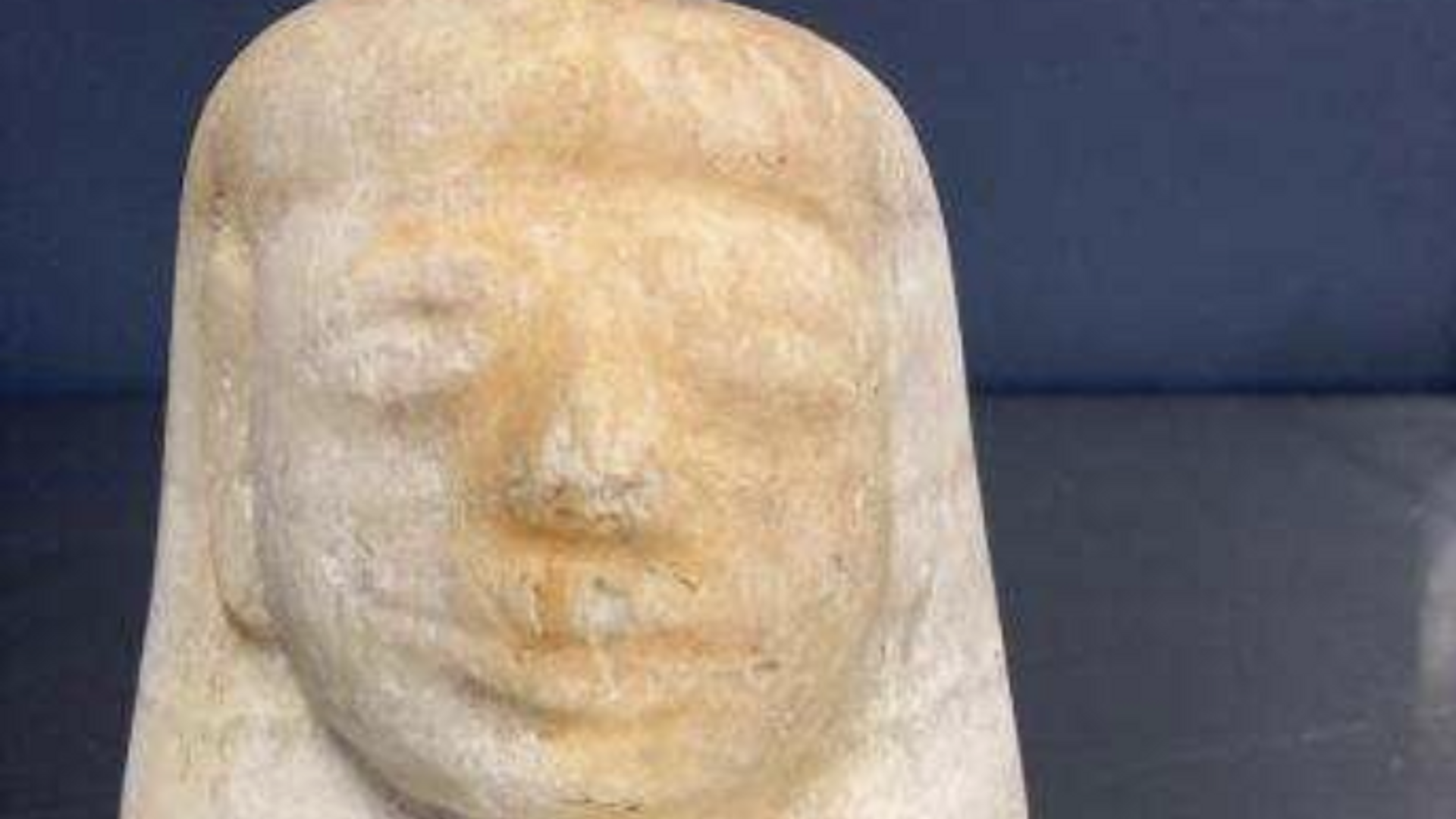https://sputnikglobe.com/20220828/3000-year-old-egyptian-artifact-discovered-in-memphis-tennessee-1100076263.html
3,000-Year-Old Egyptian Artifact Discovered in Memphis, Tennessee
3,000-Year-Old Egyptian Artifact Discovered in Memphis, Tennessee
Sputnik International
According to Interpol, the illegal trafficking of cultural property may be as high as $10 billion a year. Much of the cultural property heads to Europe before... 28.08.2022, Sputnik International
2022-08-28T03:29+0000
2022-08-28T03:29+0000
2022-08-28T09:18+0000
americas
ancient egypt
interpol
us customs and border protection (cbp)
tennessee
artifacts
stolen artifacts
department of homeland security (dhs)
https://cdn1.img.sputnikglobe.com/img/07e6/08/1c/1100076118_0:81:689:468_1920x0_80_0_0_9b617405af84ade4c397363c1072794a.png
An Egyptian artifact that may be over 3,000 years old was confiscated by US Customs and Border Protection (CBP) officers after finding it in a shipping port in Memphis, Tennessee, officials said on Thursday.The artifact was discovered on August 17 and was shipped from a dealer in Europe to a private buyer in the United States. The manifest listed the item as an antique stone sculpture over 100 years old, which may be the understatement of the millennium.CBP officials worked with experts at the University of Memphis Institute of Egyptian Art and Archaeology to confirm the item’s authenticity. They said the item was likely from the Egyptian Third Intermediate Period, dating from 1069 BC to 653 BC, meaning the item is at least over 2,600 years old and may be over 3,000 years old.They also determined that it is a canopic jar lid, depicting the Egyptian funeral deity Imsety, who was one of the four sons of Horus. Canopic jars were used to store mummies’ internal organs. Imsety was specifically tasked with protecting the deceased’s liver. Some believe he helped revive the dead to pass them to his father.The shipper had made conflicting statements about the item’s value, which led to the CBP seizing the item. The Convention on Cultural Property Implementation Act of 1983 restricts the import of some archeological and ethnological materials into the United States, and it was under this law that the CBP was able to take the lid.The head was then sent to the Department of Homeland Security Investigations for further examination. They hope to determine the item’s history of ownership.
https://sputnikglobe.com/20220531/egypt-displays-hundreds-of-newly-discovered-artefacts-dating-over-2500-years-old-1095887230.html
americas
tennessee
Sputnik International
feedback@sputniknews.com
+74956456601
MIA „Rosiya Segodnya“
2022
News
en_EN
Sputnik International
feedback@sputniknews.com
+74956456601
MIA „Rosiya Segodnya“
Sputnik International
feedback@sputniknews.com
+74956456601
MIA „Rosiya Segodnya“
ancient egypt, interpol, us customs and border protection (cbp), tennessee, artifacts, stolen artifacts, department of homeland security (dhs)
ancient egypt, interpol, us customs and border protection (cbp), tennessee, artifacts, stolen artifacts, department of homeland security (dhs)
3,000-Year-Old Egyptian Artifact Discovered in Memphis, Tennessee
03:29 GMT 28.08.2022 (Updated: 09:18 GMT 28.08.2022) According to Interpol, the illegal trafficking of cultural property may be as high as $10 billion a year. Much of the cultural property heads to Europe before being sent to North America or East Asia.
An Egyptian artifact that may be over 3,000 years old was confiscated by US Customs and Border Protection (CBP) officers after finding it in a shipping port in Memphis, Tennessee, officials
said on Thursday.
The artifact was discovered on August 17 and was shipped from a dealer in Europe to a private buyer in the United States. The manifest listed the item as an antique stone sculpture over 100 years old, which may be the understatement of the millennium.
CBP officials worked with experts at the University of Memphis Institute of Egyptian Art and Archaeology to confirm the item’s authenticity. They said the item was likely from the Egyptian Third Intermediate Period, dating from 1069 BC to 653 BC, meaning the item is at least over 2,600 years old and may be over 3,000 years old.
They also determined that it is a canopic jar lid, depicting the Egyptian funeral deity Imsety, who was one of the four sons of Horus. Canopic jars were used to store mummies’ internal organs. Imsety was specifically tasked with protecting the deceased’s liver.
Some believe he helped revive the dead to pass them to his father.
The shipper had made conflicting statements about the item’s value, which led to the CBP seizing the item. The Convention on Cultural Property Implementation Act of 1983 restricts the import of some archeological and ethnological materials into the United States, and it was under this law that the CBP was able to take the lid.
The head was then sent to the Department of Homeland Security Investigations for further examination. They hope to determine the item’s history of ownership.





